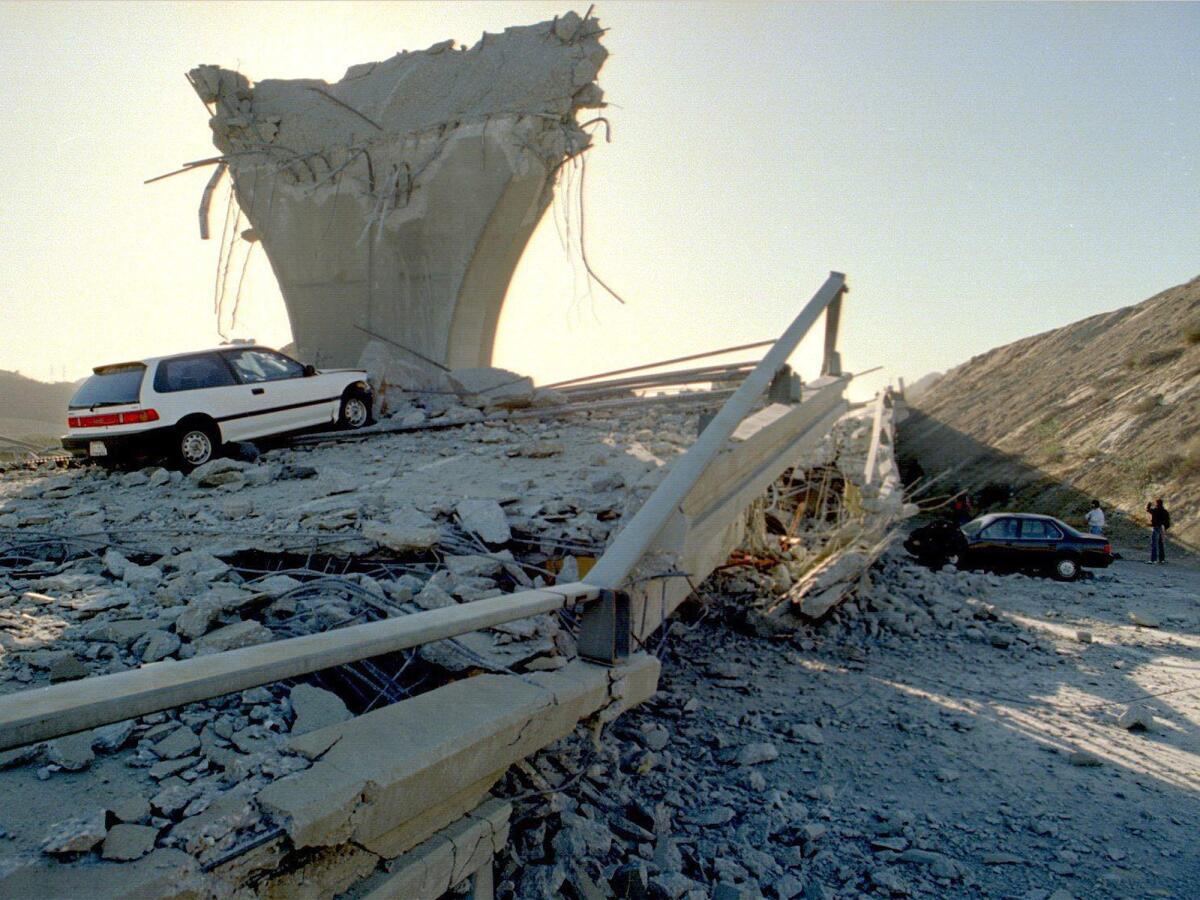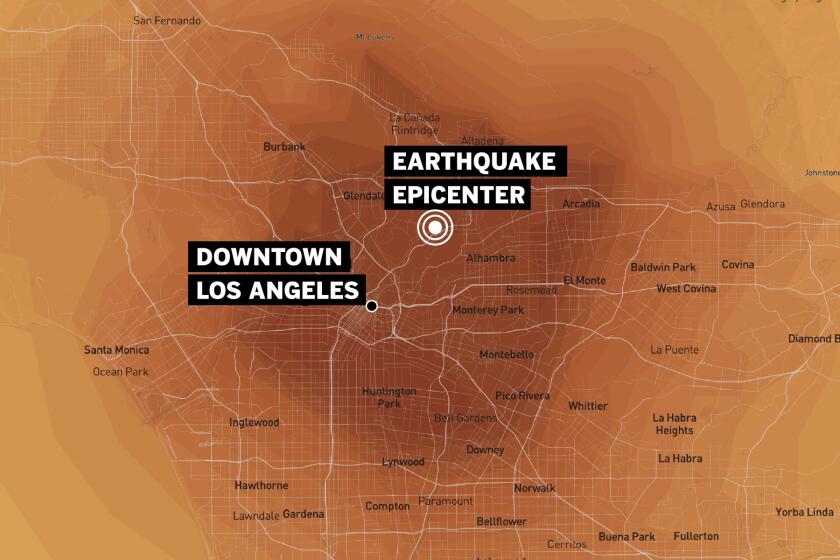Scientists finally know how big earthquakes start: With many smaller ones

- Share via
The vast majority of earthquakes we feel come soon after smaller ones, according to new research that provides unprecedented insights into how seismology works.
Sometimes days or even weeks before most temblors of at least magnitude 4.0, scientists have found, smaller ones start rippling beneath the Earth’s surface — activity that can be detected thanks to an advanced computing technique.
“One of the biggest questions in earthquake seismology is how earthquakes get started,” said the study’s lead author, Daniel Trugman, a seismologist at Los Alamos National Laboratory.
Previously, scientists observed that only half of all moderate quakes had smaller precursor events. This new study of earthquakes in Southern California of at least magnitude 4 between 2008 and 2017 found that at least 72% of them followed less-powerful quakes.
“Elevated foreshock activity is pervasive in Southern California,” the study concluded.
“It is surprising,” said study coauthor Zachary Ross, an assistant professor of geophysics at Caltech. “It’s important for understanding the physics of earthquakes. Are they silent until this big event? Or is there a weakening process of the fault, or some evidence that the fault is changing before this larger event?”
The study shows the answer is likely the latter explanation.
The discovery gives scientists a better understanding about how earthquakes are generated.
Knowing that even moderate quakes probably occur after a series of less-powerful ones gives added weight to the idea that earthquake sequences can grow, not unlike a spreading disease epidemic. In fact, the study shows the foreshock sequences ranged from starting three days to 35 days ahead of the mainshock.
The finding doesn’t mean we should suddenly be worried about small quakes. Statistically speaking, only 5% of earthquakes are followed up by something worse. It also doesn’t mean researchers are any closer to predicting the exact timing and epicenters of big earthquakes.
“The vast majority of time that you have an earthquake,” Ross said, “even if you see anomalous activity start up, it’s going to die down on its own — that’s most of the time.”
But understanding how quakes get bigger can only help scientists get better at aftershock forecasting. That would help the public understand when there’s a greater risk, such as when the chance of a large quake rises from a background risk of 1-in-10,000 odds to 1-in-1,000 odds, based on a previous quake.
“We are definitely moving toward forecasting that is statistical in nature,” Trugman said.
The discovery could also help improve the speed of earthquake early warning systems, Ross said. If the computer has detected microquakes close to a major fault, and knows that most major quakes are preceded by smaller foreshocks, that can help speed up the decision by the system to issue a warning in the moments after an earthquake has begun rupturing along a fault.
The breakthrough in the study, published earlier this summer in the journal Geophysical Research Letters, was made possible by the discovery of a new technique to find very small earthquakes — quakes as small as magnitudes 0 and 1, and some as small as magnitude negative 2.
(Quakes can now have negative magnitudes because this new technique allows for observation of quakes so small they were previously thought to be undetectable.)
ShakeAlertLA, the early warning app, will now issue alerts for weaker shaking after the Ridgecrest quakes in July didn’t register in L.A.
Having a higher-definition look now allows scientists to detect many more foreshocks.
“This new information is coming from the tiniest magnitude events that were basically invisible before,” Ross said.
For the study, Trugman and Ross focused on 46 of the largest quakes in Southern California between 2008 and 2017 (while excluding those that were aftershocks of other larger events). They found that 33 of the 46 had a statistically significant jump in foreshocks compared with the normal rate of earthquakes for that area.
They discovered a particularly lengthy foreshock sequence preceding the magnitude 5.1 La Habra earthquake of March 2014. There were foreshocks in the magnitude 0 and 1 range as early as 17 days ahead of the mainshock.
The 2010 Easter Sunday magnitude 7.2 earthquake widely felt in Southern California was not included in the analysis, because its epicenter was in Baja California. But that earthquake was preceded by a notable foreshock sequence.
The scientists could not determine a specific pattern to the foreshocks that would lead to a magnitude 4 or greater quake. Sometimes, it would appear as a burst of quakes near what would become the mainshock epicenter days or hours later. Other times, it would appear as a widespread increase in the earthquake rate in the general area before the mainshock.
They also found that shallower mainshocks tended to have more foreshocks, as do areas with higher heat flow, such as around the Coso Volcanic Field in Inyo County and the Salton Sea, which are warmed by magma.
The results help solve a long mystery that earthquake scientists had not been able to explain. In lab experiments where scientists would simulate earthquakes with sensitive equipment, there would always be small earthquakes that came before the main quake. “It’s never just silent until the final failure,” Ross said of the lab earthquakes.
The results suggest that it’s possible that all moderate and large quakes are preceded by something smaller, but getting to that conclusion would require more studies.
“It’s hard to imagine this huge fault that stays completely silent until a single point just happens to start failing,” Ross said. “Physically, that seems a little difficult to imagine.”
More to Read
Sign up for Essential California
The most important California stories and recommendations in your inbox every morning.
You may occasionally receive promotional content from the Los Angeles Times.












